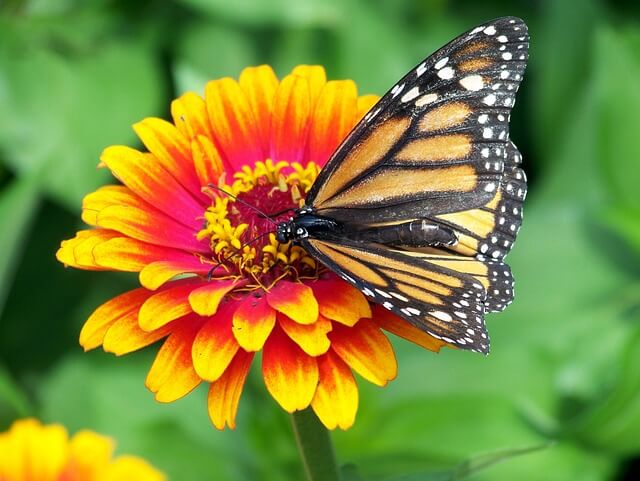White spots on monarch butterflies’ wings help them reach their wintering destination nearly 3,000 miles away in south and central Mexico, according to a study by the University of Georgia. Researchers believe the white spots may change airflow patterns around the wings, enhancing the butterflies’ flight efficiency during their migration. The spots may also help the butterflies capitalize on solar energy during their journey.
University of Georgia researchers have discovered that monarch butterflies with more white spots on their wings are more successful in reaching their wintering destination. The spots may alter airflow patterns around the wings and are believed to be linked to improved flight efficiency during long migrations.
Lead author Andy Davis, an assistant researcher in UGA’s Odum School of Ecology, said, “We undertook this project to learn how such a small animal can make such a successful long-distance flight.” Davis expressed surprise, explaining, “We actually went into this thinking that monarchs with more dark wings would be more successful at migrating because dark surfaces can improve flight efficiency. But we found the opposite.”
The study involved analyzing almost 400 wild monarch wings collected at various stages of their migration, and the measurements showed that successful migrants had about 3% less black and 3% more white on their wings. Davis emphasized, “It’s the white spots that seem to be the difference maker.”
Additionally, an analysis of museum specimens including monarchs and six other butterfly species revealed that monarchs had notably larger white spots compared to non-migratory species. The southern monarch, a semi-migratory relative, was the closest in having a similar proportion of white spots.
The researchers postulate that the butterflies’ coloration is related to the amount of solar radiation they receive during migration. Davis elaborated, “The amount of solar energy monarchs are receiving along their journey is extreme, especially since they fly with their wings spread open most of the time. After making this migration for thousands of years, they figured out a way to capitalize on that solar energy to improve their aerial efficiency.”
However, with global temperatures on the rise, altering solar radiation levels, monarchs may need to adapt. Mostafa Hassanalian, co-author of the study and an associate professor at the New Mexico Institute of Mining and Technology, raised concerns that increased solar intensity might reduce aerial efficiency, adding to the challenges monarchs face during migration.
On a positive note, Davis’s earlier research showed that monarchs’ summer populations have remained fairly stable over the past 25 years. “The breeding population of monarchs seems fairly stable, so the biggest hurdles that the monarch population faces are in reaching their winter destination,” Davis added. “This study allows us to further understand how monarchs are successful in reaching their destination.”
The study, published in PLOS ONE, was co-authored by Christina Vu from UGA’s Odum School of Ecology, Paola A. Barriga from UGA’s Department of Plant Biology, and Brenden Herkenhoff from New Mexico Tech.


